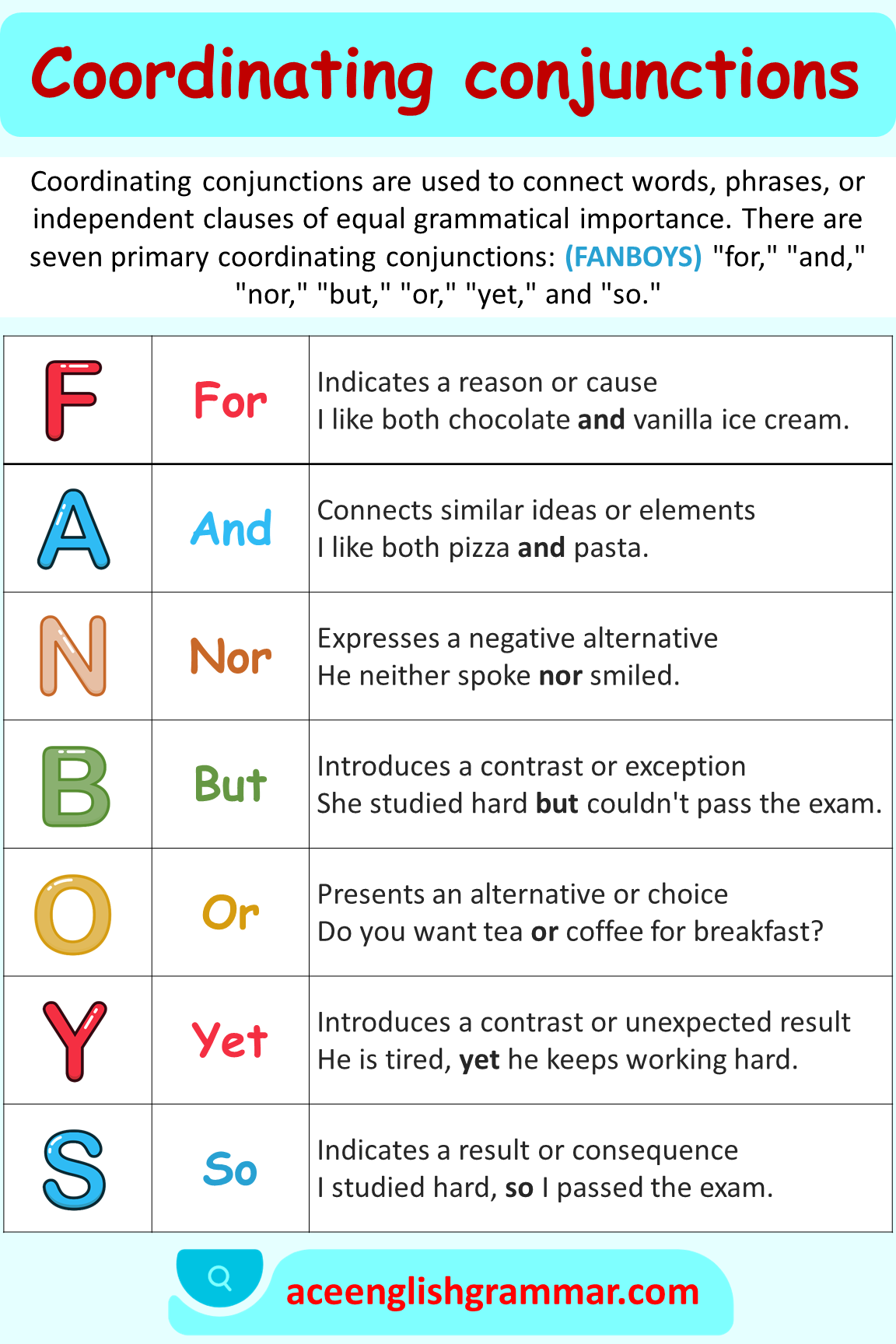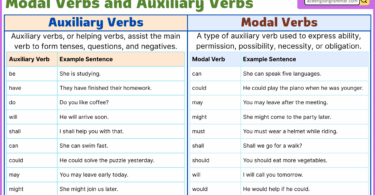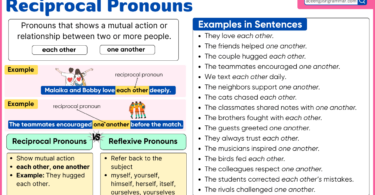Coordinating conjunctions are essential elements in our daily communication. They often referred to as “coordinators,” are words that join words, phrases, or independent clauses of equal importance. They are small but powerful words that help connect similar ideas in a sentence. Whether you realize it or not, you use coordinating conjunctions daily to link words, phrases, clauses, or whole sentences together. These little connectors, such as “and,” “but,” and “or,” may seem small, but their impact is mighty. In this article, we will explore what coordinating conjunctions are, their rules, and how to use them effectively with various examples to help you better understand this important grammatical concept. So, let’s get started!
Table of Contents
What is a Coordinating Conjunction?
A coordinating conjunction is a word that connects words, phrases, or clauses of equal grammatical importance in a sentence. It’s like glue that holds different parts of a sentence together, helping to show the relationship between them. They join words, phrases, or independent clauses to create compound sentences. The most common coordinating conjunctions are For, And, Nor, But, Or, Yet, So—remembered by the acronym FANBOYS. Each conjunction has its unique function. “And” adds, “but” contrasts, “or” presents options, “nor” indicates alternatives, “for” explains, “yet” shows contrast, and “so” demonstrates a consequence.
Coordinating conjunctions helps create compound sentences by joining independent clauses. An independent clause is a complete sentence that can stand alone, and when connected by a coordinating conjunction, they form a compound sentence. For example, consider the sentence: “I wanted to go to the store, but it was raining.” Here, “but” is a coordinating conjunction that connects two independent clauses, “I wanted to go to the store” and “it was raining.” The conjunction “but” indicates a contrast between the desire to go to the store and the obstacle of rain.
Example Sentences:
- I like both tea and coffee.
- She neither likes coffee nor tea.
- She is intelligent, yet she is humble.
- It’s raining outside, so take an umbrella.
- He wanted a bike, but it was too expensive.
- You can choose the blue shirt or the red one.
Coordinating Conjunctions list
There are seven commonly used coordinating conjunctions, often remembered by the acronym FANBOYS:
For:
- Usage: Indicates reason or cause.
- Example: “I waited patiently, for the bus to arrive.”
And:
- Usage: Adds information, indicating a connection between elements, or lists items.
- Example: “She likes coffee, and he prefers tea.”
Nor:
- Usage: Connects two negative alternatives or negates both options.
- Example: “He neither called nor sent a message.”
But:
- Usage: Indicates contrast or opposition.
- Example: ” She is talented but inexperienced.”
Or:
- Usage: Presents an alternative or choice.
- Example: “Would you like tea or coffee?”
Yet:
- Usage: Contrasts ideas or surprise, often used in negative sentences.
- Example: “She studied hard, yet she didn’t pass.”
So:
- Usage: Shows a result or consequence.
- Example: “It’s cold, so wear a jacket.”

Coordinating Conjunctions
Usage of Coordinating Conjunctions
- For (Reason): “For” is used to indicate a reason or cause, explaining why something is happening.
- Example: She stayed at home, for she was feeling unwell.
- And (Addition): “And” is employed to add similar or related information to what has already been stated.
- Example: I love to read novels and explore new places.
- Nor (Negative Addition): “Nor” is used to connect negative alternatives or to introduce a second negative idea.
- Example: She neither likes coffee nor drinks tea.
- But (Contrast): “But” is used to introduce a contrast or opposing idea to the one presented before.
- Example: It was raining, but we decided to go for a walk.
- Or (Alternative): “Or” presents an alternative or a choice between two or more options.
- Example: Would you like tea or coffee?
- Yet (Contrast or Addition): “Yet” introduces a contrast, similar to “but,” or adds information to what has already been stated.
- Example: She is tired, yet she keeps working.
- So (Cause and Effect): “So” is used to express a cause-and-effect relationship between two clauses.
- Example: The traffic was heavy, so I arrived late.
Functions of Coordinating Conjunctions
Here are some basic functions of coordinating conjunctions:
- Joining Words or Phrases: Coordinating conjunctions connect individual words or groups of words, enhancing the flow and coherence of a sentence.
- Example: I enjoy both reading and writing.
- Connecting Independent Clauses: Coordinating conjunctions are crucial when joining two independent clauses to create compound sentences.
- Example: She likes to hike, but he prefers to swim.
- Expressing Relationships: These conjunctions express various relationships between words, phrases, or clauses, such as addition, contrast, alternative, and cause-effect.
- Example: I wanted to go to the party, yet I had too much work.
- Creating Lists: Coordinating conjunctions are used to connect items in a list, providing a sense of unity and organization.
- Example: She bought apples, oranges, and bananas.
- Showing Cause and Effect: Coordinating conjunctions help convey cause-and-effect relationships, linking actions or events logically.
- Example: He studied hard, so he performed well on the exam.
Coordinating Conjunction Rules
Here are some basic rules of Coordinating Conjunctions
Joining Similar Elements:
Coordinating conjunctions are used to connect elements that are of the same grammatical structure. This means joining words to words, phrases to phrases, or clauses to clauses.
Example: I like both tea and coffee.
Equal Importance:
Coordinating conjunctions join elements of equal importance. Each part of the sentence connected by these conjunctions should have equal grammatical weight.
Example: She is talented but inexperienced.
Comma Usage:
When coordinating conjunctions join independent clauses (complete sentences), a comma is typically placed before the conjunction.
Example: I wanted to go to the concert, but the tickets were sold out.
No Comma with Coordinating Adjectives:
When coordinating conjunctions connect adjectives, there is no need for a comma.
Example: “She wore a bright and colorful dress.”
Creating Lists:
Coordinating conjunctions are frequently used to connect items in a list.
Example: I need eggs, flour, and sugar for the recipe.
Maintaining Parallel Structure:
When coordinating conjunctions are used to connect items in a list, it is essential to maintain a parallel structure. This means that each item in the list should follow the same grammatical pattern.
Example: She likes to swim, hike, and read in her free time.
Coordinating Conjunctions Examples
Common Mistakes to Avoid
- Comma Splices: Avoid joining two independent clauses with only a comma and a coordinating conjunction. Use a comma plus a coordinating conjunction or a semicolon.
- Misuse of “And” in Lists: Sometimes, “and” is incorrectly used repeatedly in a list. Ensure that each item in the list is separated by a comma, and “and” is used before the last item.
- Parallel Structure: Maintain consistency in structure when using coordinating conjunctions. Ensure that connected elements have a similar grammatical form.
- Mismatched Conjunctions: Avoid using the wrong coordinating conjunction. Each FANBOYS word has its unique function. For example, don’t use “and” when you mean “but” or “or.”
Coordinating Conjunctions Exercises
1. I like both tea ____ coffee.
- and
- but
- or
- so
2. She wanted to go out, ____ it was raining.
- and
- but
- or
- so
3. She studied hard, ____ she couldn’t pass the exam.
- for
- nor
- but
- so
4. You can have tea ____ coffee, whichever you prefer.
- for
- nor
- or
- yet
5. He didn’t like tea ____ coffee.
- and
- nor
- but
- so
6. The car broke down, ____ they had to call for help.
- and
- but
- or
- so
7. She can either go to the party ____ stay home.
- and
- nor
- or
- yet
8. They were hungry, ____ they decided to order pizza.
- and
- nor
- but
- so
9. The movie is long, ____ it is interesting.
- for
- nor
- but
- so
10. You can have the blue ____ the red shirt.
- and
- nor
- or
- yet
Answers
- and
- but
- but
- or
- nor
- so
- or
- so
- but
- or
FAQs
Q1: What are coordinating conjunctions?
Coordinating conjunctions are words that connect elements of equal grammatical rank in a sentence. The most common coordinating conjunctions are For, And, Nor, But, Or, Yet, and So (FANBOYS).
Q2: What are the common coordinating conjunctions?
The common coordinating conjunctions are FANBOYS: For, And, Nor, But, Or, Yet, and So.
Q3: How do coordinating conjunctions differ from subordinating conjunctions?
Coordinating conjunctions connect elements of equal importance, creating compound sentences. Subordinating conjunctions, on the other hand, introduce dependent clauses and create complex sentences by establishing a hierarchy between clauses.
Q4: How do I choose the right coordinating conjunction?
The choice of coordinating conjunction depends on the relationship between the elements you are connecting. Use “and” for addition, “but” for contrast, “or” for alternatives, “nor” for negative alternatives, “for” for reasons, “yet” for contrast or concession, and “so” for consequence.
Q5: What are the functions of coordinating conjunctions?
Here are some basic functions of coordinators:
- For: Indicates cause or reason.
- And: Adds information or lists items.
- Nor: Presents alternatives/negates both options.
- But: Expresses contrast or contradiction.
- Or: Implies a choice or alternative.
- Yet: Indicates contrast or surprise.
- So: Shows a result or consequence.
You May Also Like:




Leave a Comment